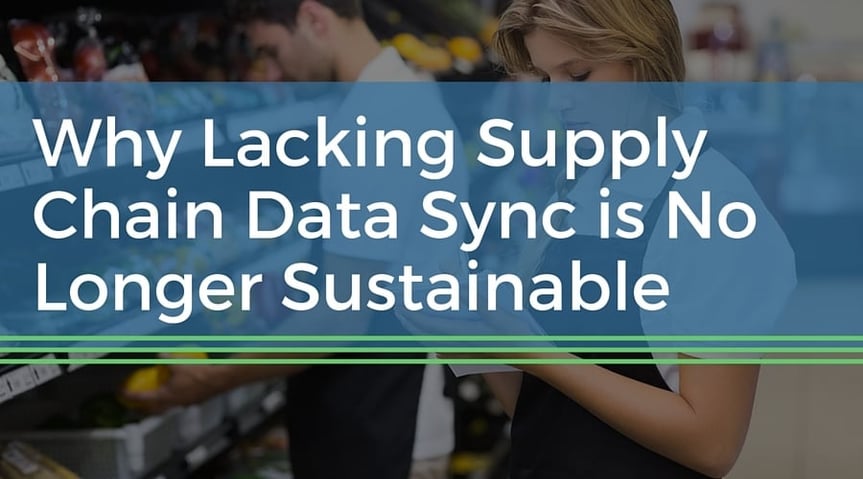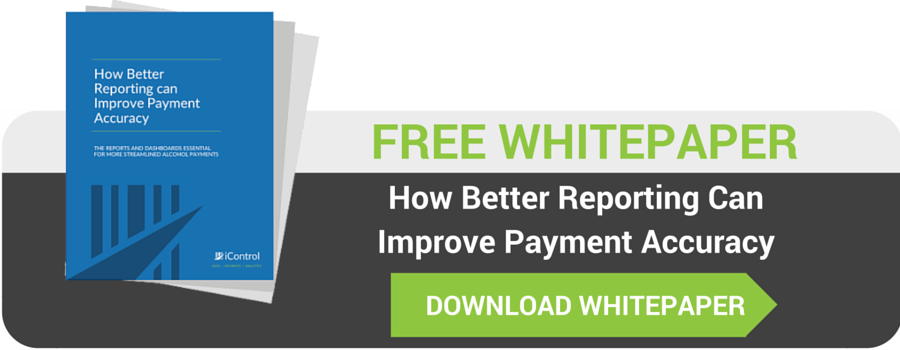Big data has been getting a lot of press lately. Companies are investing significant amounts of capital to seize the opportunity that big data represents. However, while much of the focus has been on how to collect and analyze this data, very little attention has been paid to big data integration across partners.
This is especially evident in the retail supply chain, where retailers and their suppliers are managing larger and more complex data sets, but still doing so independently. This lack of sharing and synchronizing of key supply chain data is preventing even the most advanced retailers and suppliers from fully realizing the benefit of big data collaboration.

In order to remain competitive in a market where collaborative technology is becoming the new standard, finding the right data sync solution is essential to managing data such as:
- Item file details such as cost, retail and promotional pricing
- Product specifications such as UPC and item codes
- Retailer point-of-sale (POS) data at the transaction level
- Supplier orders, deliveries, credits and inventories taken at the store and UPC level
- Retailer planogram and shelf set data by store
- Loyalty card program insights
This blog post outlines the benefits of enhanced retailer-supplier collaboration built on better synchronization of this key supply chain data. Here's why lacking supply chain data sync is no longer sustainable and what you can do about it.
Data Sync Streamlines Billing & Payments
In today's retail environment, promotional activity can change week to week. Even product costs can fluctuate as commodity pricing adjusts to market demand. The days of a standard annual item catalog are gone, along with the predictability and consistency that it provided.
More dynamic product pricing can create invoicing and payment errors when retailers and their suppliers do not synchronize their data on a daily basis. And even with an established process, a single error can impact a week's worth of invoices and payments. It is important to ensure any billing or payments solution include:
- Data Integrity reporting that features proactive auditing to prevent errors before they hit the invoice
- Invoice Processing that utilizes fully-synchronized item files and promotional plans to generate more accurate invoices
Many supply chain partners are selecting a specialized data sharing platform that provides greater synchronization of once disparate data sets - preventing errors before they occur. Such solutions also provide auditing features and credit tracking to streamline billing and payments overall.
Data Sync Automation Eliminates Manual Processes
Many retailers and suppliers still rely on electronic forms, email communication, faxes and even paper documentation to process changes in item file data such as pricing and promotional activity. Even adding new items to distribution can be delayed when these manual processes are used.
With advances in technology, these types of data sync can be processed automatically using set business rules as parameters. Using a best-in-class data sync platform to collaborate and synchronize supply chain data can simplify supplier requests and the retailer approval process.
Using a collaborative platform ensures requests submitted by suppliers adhere to the retailer's time lines, while also providing a gatekeeper functionality that allows retailers to approve or deny these requests quickly and easily. Since this platform is collaborative, suppliers have visibility to the status of their requests without having to call or email the retailer.
Data Sync Improves Sales and Inventory Management
Data such as order, delivery and inventory quantities that are managed by suppliers can also become more valuable when synchronized with their retailers. It becomes essential for supply chain partners to choose a collaborative portal to aggregate this data and make it available within an industry-leading analytics suite that includes:
- Shrink Management tools that combine key supply chain data from multiple sources to track shrink at the source
- Assortment & Distribution analysis that maintains shelf integrity and drives new sales through expanded distribution
The availability of point-of-sale (POS) data is critical for retailers to share internal sales updates, performance vs. budget, and assess promotional activity. But this data, when shared with supplier partners, can also help improve demand planning, order accuracy and overall inventory management throughout the supply chain. This leads to better in-stock positions at store level, and ensures every sales opportunity is captured.
Data Sync Supports Advanced Retail Insights
The opportunities to synchronize sales data can go even further when shared within a retail analytics solution that integrates retailer POS and loyalty card data with supplier distribution and promotional activity within a single retail insights platform that features:
- Promotional Performance analysis that maximizes the effectiveness of your promotions while managing your budget in real time
- Market Basket analysis that helps understand your customers at the transaction level and what components of the basket are driving sales
- Business Reviews can provide synchronization of a supplier's portfolio and the remaining category in terms of sales trends and market share
- Item Performance reporting can identify distribution issues where a product is not selling, while also helping to maintain shelf set integrity and ensuring all authorized items have placement
The addition of shared retailer loyalty card data can enhance the insights into each of the reports mentioned above. Sharing these retail insights between supply chain partners can improve alignment and strategic focus on building their mutual business.
Data Sync Reduces Alcohol Delivery Invoice Reconciliation
Retailers selling alcohol are all-too-familiar with being required to pay the invoice amount for alcohol deliveries regardless of the accuracy of the delivery cost or quantity. Any errors have to be addressed by submitting credit requests to the distributor. This process is inefficient, and costs the retailer and distributor both time and money to reconcile their invoices and payments.
With advanced data sync solutions such as iControl's patent-pending Next-Generation Reconciliation™(NGR), retailers and alcohol distributors can finally take a proactive approach to synchronizing invoice costs with retailer pricebooks using the proprietary Line Item Matching tool.
"NGR" also provides the ability to compare distributor and retailer invoices with the Vendor Invoice Details report, which identifies key variances, and establishes tracking of credit amounts until reconciliation.
Contact us to learn about our own data sharing platform that brings complete synchronization to your retail supply chain.
